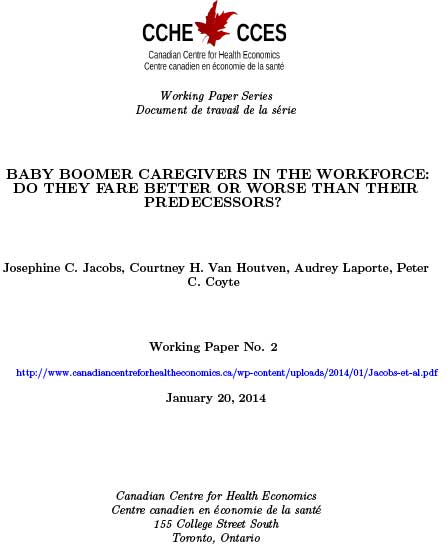Baby Boomer caregivers in the workforce: Do they fare better or worse than their predecessors
Josephine C. Jacobs, Courtney H. Van Houtven, Audrey Laporte, Peter C. Coyte

Since the 1960’s there have been substantial increases in women’s labor force attachment. Meanwhile, increases in life expectancy and a shifting focus to care in community settings have increased the odds of becoming a caregiver. In light of these changes and the unpaid leave policies introduced in the 1990s to reduce this role strain, it is important to assess whether the labor market outcomes of caregivers have changed over time. We explored the impact of caregiving on women’s labor force outcomes and whether this effect was different for women in the Baby Boomer generation versus women born in the pre-World War II years. Using data from the American National Longitudinal Surveys of Young Women and Mature Women, we followed two cohorts of pre-retirement aged women at similar points in their careers. We used pooled and fixed-effects regressions and found that intensive informal caregiving was negatively associated with labor force participation for both pre-Baby Boomers and Baby Boomers. Further, the caregiving effects were not significantly different across cohorts. Caregiving was not significantly associated with the hours worked or wages. This study provides a first step in establishing that caregiving labor market penalties have persisted over time, despite the introduction of offsetting policies.
Download Paper
Paper Keywords
informal caregiving, unpaid caregiving, labor force participation, cohort, gender, United States
